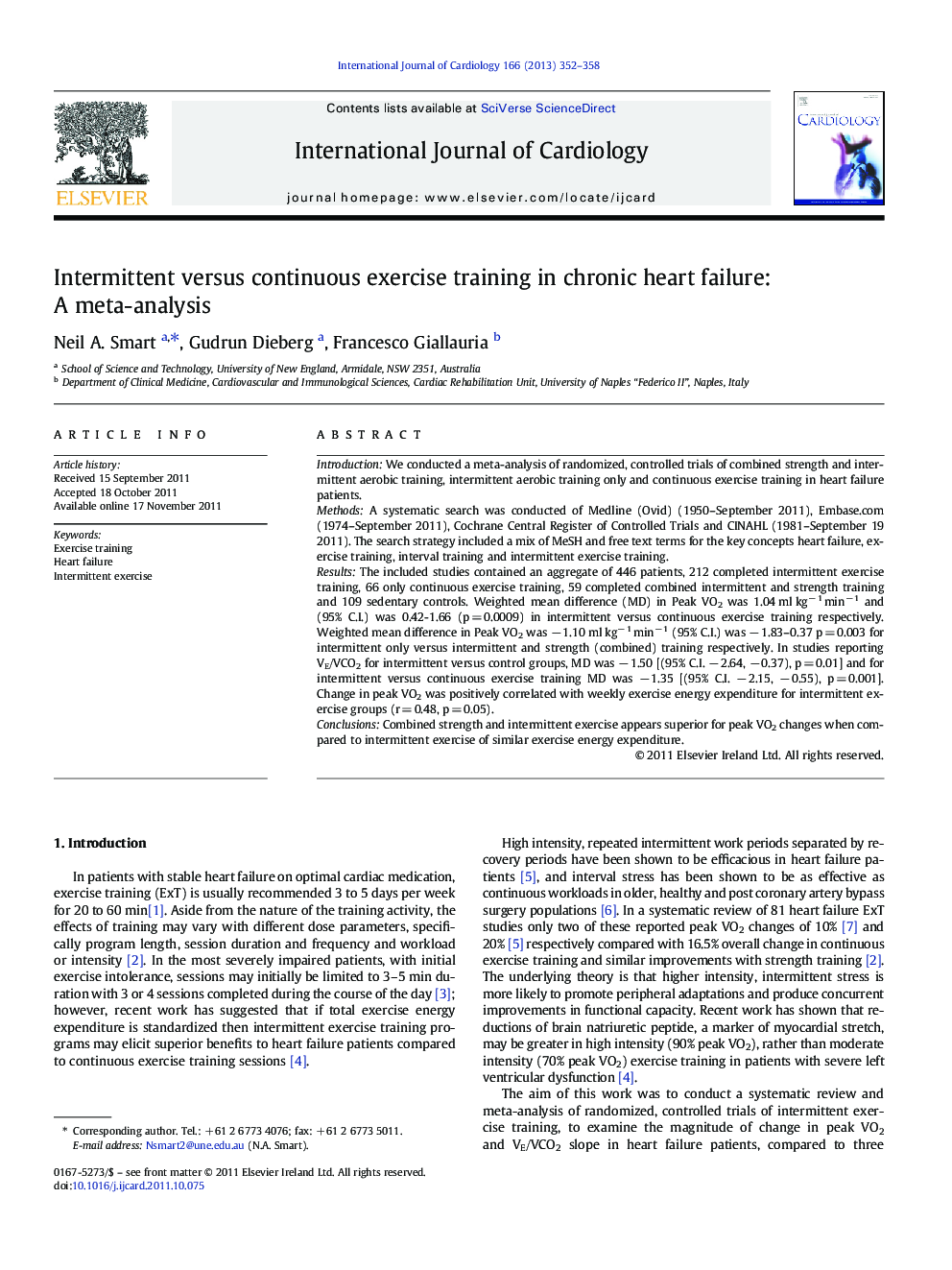| Article ID | Journal | Published Year | Pages | File Type |
|---|---|---|---|---|
| 5976383 | International Journal of Cardiology | 2013 | 7 Pages |
IntroductionWe conducted a meta-analysis of randomized, controlled trials of combined strength and intermittent aerobic training, intermittent aerobic training only and continuous exercise training in heart failure patients.MethodsA systematic search was conducted of Medline (Ovid) (1950-September 2011), Embase.com (1974-September 2011), Cochrane Central Register of Controlled Trials and CINAHL (1981-September 19 2011). The search strategy included a mix of MeSH and free text terms for the key concepts heart failure, exercise training, interval training and intermittent exercise training.ResultsThe included studies contained an aggregate of 446 patients, 212 completed intermittent exercise training, 66 only continuous exercise training, 59 completed combined intermittent and strength training and 109 sedentary controls. Weighted mean difference (MD) in Peak VO2 was 1.04 ml kgâ 1 minâ 1 and (95% C.I.) was 0.42-1.66 (p = 0.0009) in intermittent versus continuous exercise training respectively. Weighted mean difference in Peak VO2 was â 1.10 ml kgâ 1 minâ 1 (95% C.I.) was â 1.83-0.37 p = 0.003 for intermittent only versus intermittent and strength (combined) training respectively. In studies reporting VE/VCO2 for intermittent versus control groups, MD was â 1.50 [(95% C.I. â 2.64, â 0.37), p = 0.01] and for intermittent versus continuous exercise training MD was â 1.35 [(95% C.I. â 2.15, â 0.55), p = 0.001]. Change in peak VO2 was positively correlated with weekly exercise energy expenditure for intermittent exercise groups (r = 0.48, p = 0.05).ConclusionsCombined strength and intermittent exercise appears superior for peak VO2 changes when compared to intermittent exercise of similar exercise energy expenditure.
